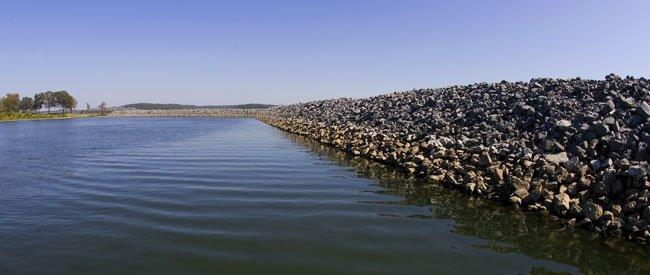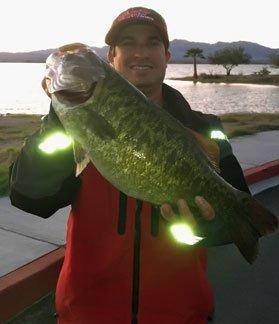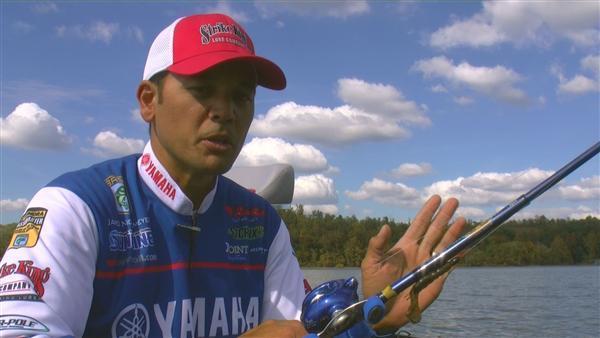Often described as structure, knowing how this cover lays on structure key to fishing
Tomato. Toe-Mawt-O. Some things are different, and some things are wrong. Often if the things that are wrong are done enough, they become commonly accepted as correct. It’s true in bass fishing as well. Like folks saying a rod that is Medium Power is Medium Action. Action refers to the responsiveness of the tip and the rod in general. Power refers to the strength of the backbone. But we’ll save that discussion for a later date.
Cover and structure are often intertwined in fishing vernacular. And used in place of the other incorrectly at times. Structure refers to the landscape often dictated by the rivers that were impounded and the subsequent hills and valleys that were covered with water. Cover refers to what is lying on top of the structure that entices baitfish to hang out and provides the field, if you will, for fish to pursue their prey.
Cover comes in many forms. Brush, grass, and manmade cover alike can all hold bass at various times throughout the year. Certain types of cover seem to hold bass throughout the whole year. Certain types of cover tend to congregate fish and other types seem to give bass and forage a broader area to relate and feed.
One of these broadening types of cover is rip rap. Big chunks of gravel, granite and other forms of rock are laid along shorelines to protect against erosion. The byproduct of this manmade cover is that it also creates a new miniature ecosystem around the rocks. As an angler, rip rap is just like any other type of cover. Not all of it will hold fish and not all of will be in productive areas.
The productive sections of rip rap are often associated with the structure or types of banks they are laid along. There are seasonal conditions that can apply to why rip rap is productive. But there can also be reasons why the rip rap is so productive that has nothing to do with what’s around it but rather what isn’t around it.
Often rip rap is laid on steeper than average banks because an area has been dredged out or because a bank has already been eroded or there is a structure put in place that they don’t want losing its foothold due to water erosion. But these steep banks give the bass a place to forage in a variety of temperatures and times of the year.
Rip rap is not only easy to fish but it can be the winning pattern many times of the year. As fall leads into the winter months, the steep rip rap banks can be effective when bass start seeking out crawfish to supplement their voracious shad craving. Jigs and small crankbaits are often effective tools for this time of year.
The crankbait can cover large areas of rip rap, working the lure with casts at 30 to 45 degree angles up to the shallowest part of the rip rap and slowly crawling down through the rocks. It gives the crankbaits good deflection and fish triggering qualities. Square bills like Strike KVD 1.5 and 2.5 crankbaits work well as do Bandit 200 crankbaits, a staple for fishing rip rap.
Lighter casting jigs are often better around rip rap and the key to fishing a jig around rip rap is maintaining a tight line as you pop and tick the rocks. The heavier the jig and the more slack you put into the retrieve, the more opportunity the jig has to fall down between rocks in cracks and crevices it doesn’t easily crawl back out of. The bass aren’t under the rocks, so keeping the jig up on top of the rocks like a steak on a dinner plate what has been most effective.
In the warmer months, crankbaits and jigs may also work, but other baits like spinnerbaits and our favorite, topwaters, also get more effective on the rocks. Spinnerbaits ran just along the rocks, especially on windy days can be good. But a popper along a rip rap wall in an early morning in the spring and summer can be a dynamite fun way to catch bass. Not to mention an effective way to catch big bass prowling the cover for different prey.
Just like fishing any other type of cover, different irregularities in the rip rap can often be the key places you’ll find bass. Maybe there is a larger mound of the rip rap just under the surface that creates almost a pocket between the mound and the rip rap wall. Maybe there are pieces of wood strewn into the mix and lodged in the rocks that hold the fish adding a better ambush point for bass. Sometimes just a change on the bank, like an outcropping, a point or a drain can be the congregating point along an otherwise unremarkable stretch of rip rap.
There are other theories as to why bass are attracted to rip rap. In cold water, some believe the rocks are warmer on sunny days and thus make the water a degree or two warmer around them. On warmer days, the rocks often collect algae that attract small prey and such that in turn bring in the bass to feed. The key really is dissecting it like you would any other form of cover. Are they on the shady stretches on early mornings? Are they right up against the rocks where they meet the water or are they out at the end of the rip rap where the rock becomes more scattered and deeper? Are the bass foraging on crawfish or baitfish?
The key is to keep an open mind and once you start to piece together parts of the puzzle, you can more effectively pick it apart. Because rip rap is the type of cover that tends to be a roaming area for bass, it can also be that bass will move up and down it foraging. So where you catch them one day may be down a few hundred yards from where you catch them the following day.
The three main species of bass – largemouth, smallmouth and spotted bass – will all use rip rap at various times. And they will often use it during different times of the day and night. We’ve caught giant smallmouths on it at night with single blade spinnerbaits, big largemouths in the summer in low light mornings with topwaters and thick spotted bass with casting jigs and jerkbaits. There are lots of options, but it’s one type of cover that you can go and get a comfort level established on a new lake because it so often holds fish.
The nice thing about rip rap, unlike grass and certain types of wood cover, is it is found on fisheries all over America and beyond. Maybe they put it around ramps, around bridges, on manmade peninsulas, to make wingdams and more. Homeowners put it on their points to keep their land from eroding in wind and waves. The point is most fisheries you find yourself on, probably have a stretch or two or are literally covered in rip rap. It’s a great option throughout the year. But it has to be tested and dissected just like any other cover on a lake. Use some of these tips or experiment with other baits you think will work well in this environment and match the mood of the fish for the given conditions.
What are some of your favorite rip rap baits and tricks?
















